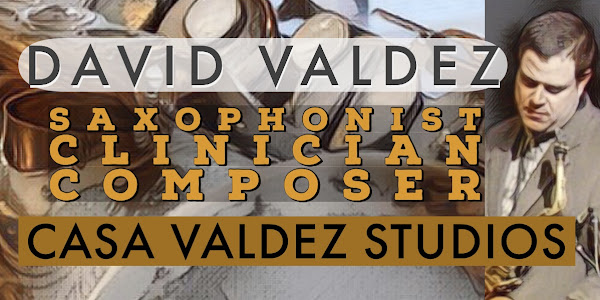
Hal Galper has put together an informative web site. He is of the great pianists of our time, working with players like Cannonball, Phil Woods, Lee Konitz, Michael Brecker, John Scofield, Chet Baker, and Tom Harrell. He has some great articles on his site worth checking out.
Here is an exerpt from Hal Galper's 'Forward Motion' book. Here he describes the advantages of thinking in half time.
"The faster you play, the slower you count." - Dizzy Gillespie
Excessive physical and emotional excitement are pleasurable and rewarding but have a negative effect on instrumental technique, endurance and emotional control. They reduce a player's ability to perform at the highest level. Performers mistakenly assume that these low-level rewards are an essential element of the playing experience. This over-emotional approach is also used as feedback to insure that they are "into" the music, that they are playing with passion. Paradoxically, the reverse is true: one achieves the highest levels of performance by developing a dispassionate and uninvolved approach. Notice how physically "quiet" most professional performers are.
This overly excited approach to performance is caused by two factors: feeling time and tempo as 1/4 notes and stage fright. (To gain a more complete understanding of the psychological problems of performance anxiety, see my article "Stage Fright and Relaxation" in the Articles section of my web site.)
Quarter-note time has a dynamic, propulsive quality that makes it difficult to play by choice and with control. It induces tension and creates over-excitement, compulsive 8th. note playing, literally reducing instrumental facility by 50%. Eighth-notes played with a 1/4 note feeling have a forced, over-articulated quality. These difficulties occur for one reason only: 1/4 note tempos occur at a rate of speed too fast to conceive and execute 8th. note ideas! Reconditioning your attitude and conception of playing 1/4 note time can eliminate this effect.
Use of 1/4 note time is a hold-over from childhood musical experience. All young music students must develop an internal "clock" and learn how to count tempo in steady 1/4 notes. This concept is then mistakenly carried over into adult musical behaviour. Although most childhood behaviour becomes modified when reaching adulthood, somehow we think this is not true of many early musical concepts. Most of us feel our tempo "clock" in one of four ways: as steady quarter-notes, on 2 & 4 of the bar, on 1 & 3 of the bar or in a steady stream of syncopated rhythms. Defined as "Swing beats", 1/4 note time and 2 & 4 of the bar are emotionally charged beats. Note that when you listen to jazz you snap your fingers on 2 & 4 because they swing. They are often used by a player as a "crutch" for keeping place and imparting a false feeling of swing to their ideas. Those who count using these beats have yet to reach rhythmic maturity. Learning to play in half-time is adult rhythmic behaviour.
The half-time approach to playing time can be applied to most tempos, except ballads. By altering your subjective perception of playing 1/4 note time to playing in half-time, you'll feel the tempo as being half as fast. You'll therefore be twice as relaxed, have twice as much time to conceive ideas and double your technical facility. In effect, you will be conceiving every tune as a ballad! It's impossible to become over-excited playing a balled tempo.
You can experience the feeling of playing in half-time by trying thefollowing experiment; tapping your foot on beats 1 & 3 of a 4/4 tempo (counting every two beats as one beat at 1/2 the tempo) and counting over two bar phrases, you are tapping out 1/4 notes of a ballad ( 1/2 time) tempo. "







No comments:
Post a Comment